9 Wiki Examples: Public Knowledge Hubs & Internal Company Wikis

Wiki examples serve as blueprints for effective knowledge management.
From public platforms like Wikipedia to internal handbooks like GitLab’s, each wiki demonstrates a distinct approach to capturing and sharing expertise.
In this guide, we’ll explore 9 standout wiki examples that prove how structure, simplicity, and community shape lasting knowledge systems.
In This Guide
- What is a Wiki?
- What Great Wiki Sites Have in Common
- The Best Wiki Examples of 2025
- 1. Wikipedia: The World’s Largest Wiki Encyclopedia
- 2. WikiWikiWeb: The First Wiki Ever (A Bit of History)
- 3. wikiHow: Public How-To Wiki
- 4. Wikivoyage: The Travel Guide Wiki
- 5. Fandom (Fan Wikis)
- 6. MDN Web Docs: Developer Documentation Wiki
- 7. Arch Linux Wiki: Community OS Documentation
- 8. Radiopaedia: The Radiology Wiki
- 9. GitLab Handbook: Public Company Wiki
- 1. Wikipedia: The World’s Largest Wiki Encyclopedia
- Your Team’s Wiki: Building a Wiki for Your Company

We rigorously test and research every product that we recommend through HeroThemes. Our review process. We may also earn a commission if you make a purchase through our links.
What is a Wiki?
A wiki is a collaborative website where users can create, edit, and interlink pages of information. A knowledge hub that anyone (with permission) can contribute to.
Whether public or private, a wiki is essentially a shared brain. It’s a place to store and retrieve collective knowledge.
Public vs. Internal Wikis
A public-facing wiki, like Wikipedia, is open to everyone, and most people can edit it. It’s a massive community effort to document information.
An internal wiki, on the other hand, is used within a team or organization. It’s locked down to employees or members, serving as a private encyclopedia of company knowledge, policies, and project docs.
What Great Wiki Sites Have in Common
From massive public sites to small team wikis, the best ones share some key traits:
1. Easy Editing and Collaboration
Allow multiple users to add or update content without any hassle.
This mostly comes down to having a user-friendly interface and a version history so you can see who changed what and roll back if needed.
This open collaboration means the content gets better and more accurate over time as many eyes review it.
2. Strong Organization and Search

Wiki or a simple website, it should be easy to navigate, and find the needed information.
- Pages should be interlinked by keywords
- Organize content based on with categories or hierarchies (like a tree of topics)
- A robust search function. So, users can quickly find the exact page or snippet
- A sidebar or index for browsing topics
3. Up-to-Date, Quality Content
Wikis only thrive when it is kept up to date. Because editing is easy, information can be corrected or improved the moment something changes.
The changes are often reviewed by moderators or power-users for accuracy. This helps maintain consistency and quality.
4. Hyperlinks and Multimedia
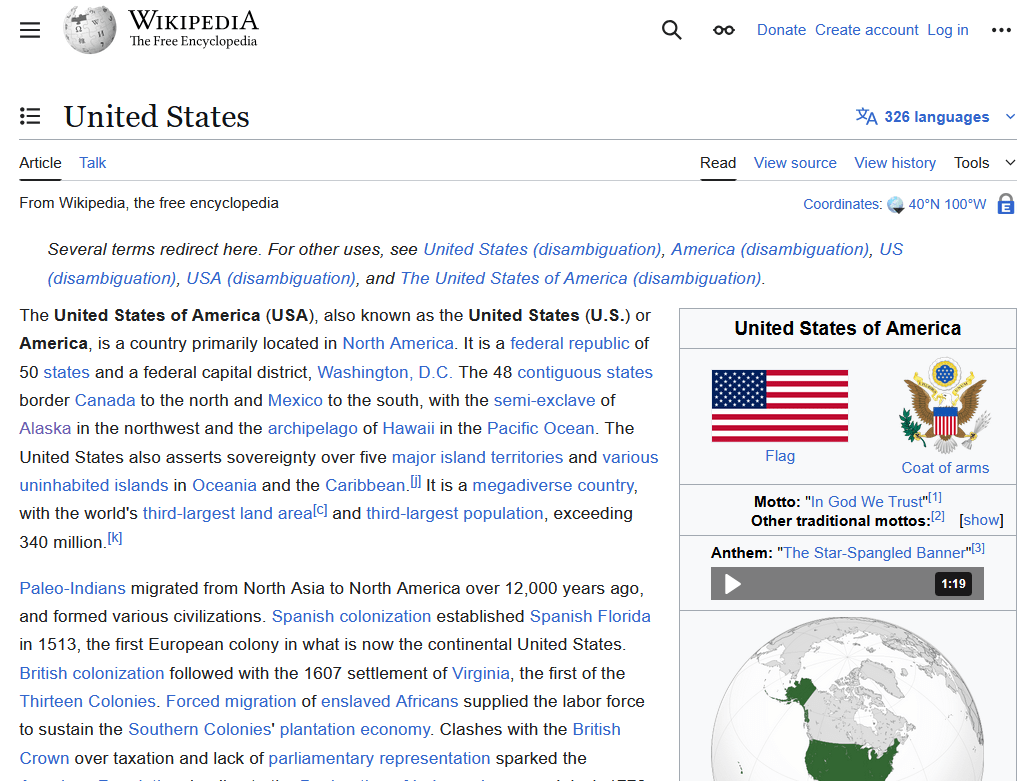
A wiki’s defining feature is that its pages reference each other via links—it’s literally a web of knowledge.
You’ll see plenty of hyperlinks in wiki articles guiding you to related topics.
And there are plenty of images, charts, or even videos to enrich the content.
5. Access Controls (for private wikis)
You need strong access control in a place, even for public wikis.
In internal wikis, admins often set who can view or edit certain pages. And these wikis are often secured behind user roles and logins.
This ensures that sensitive company information is only accessible to the right people.
The Best Wiki Examples of 2025
Here are some examples of the best wiki sites available out there.
1. Wikipedia: The World’s Largest Wiki Encyclopedia
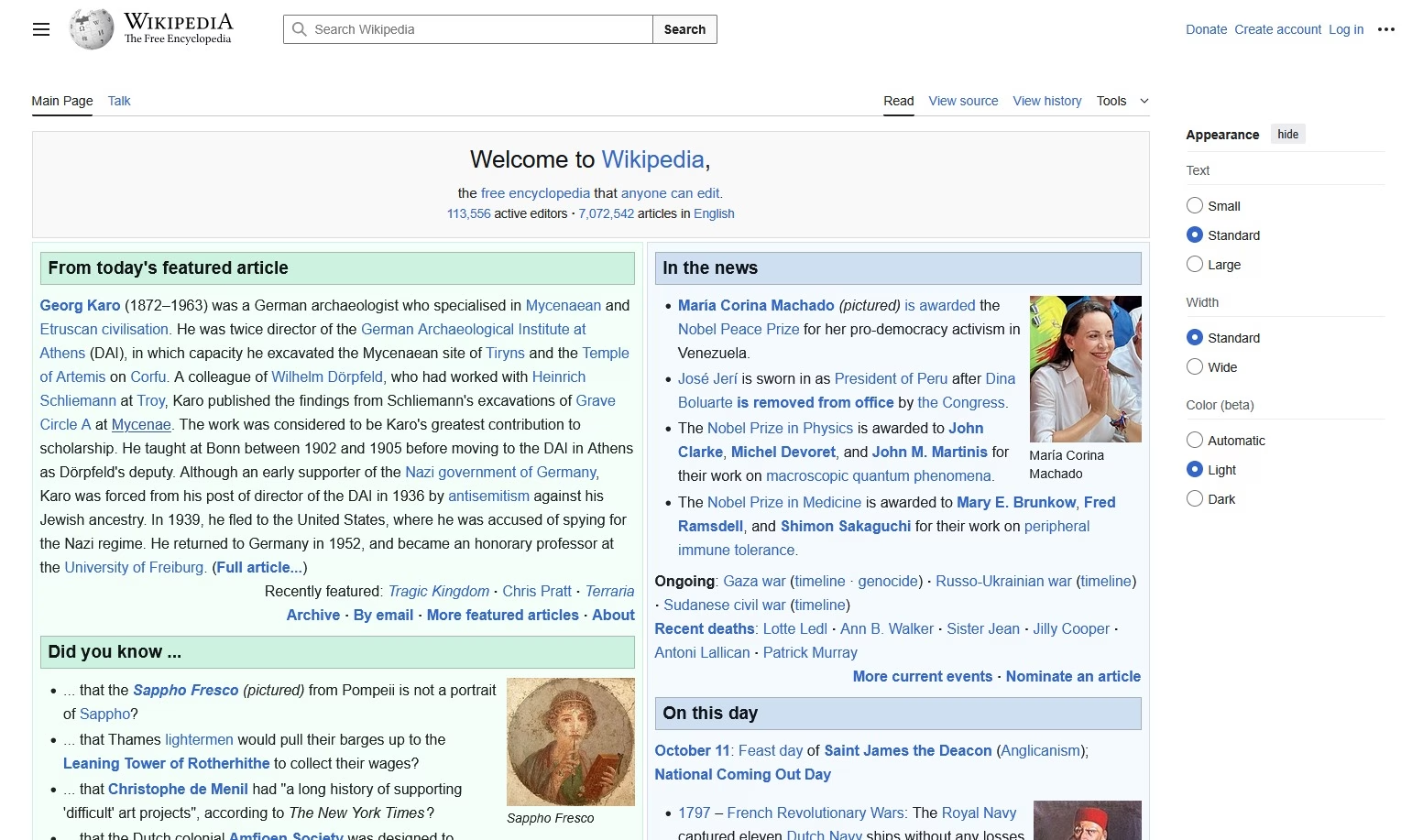
When you think about wiki site examples, nothing beats Wikipedia. It’s a free online encyclopedia that anyone can edit.
The English Wikipedia alone has over 7 million articles as of 2025, written collaboratively by volunteer editors known as “Wikipedians.”
Why is Wikipedia so successful?
- It harnesses the power of crowds. Enthusiasts on virtually every topic contribute to writing and updating articles.
- A robust system of guidelines, citations, and moderator oversight that keeps content fairly reliable.
Notable features
- Free and open access: Everyone can use Wikipedia without paying or logging in.
- Robust collaborative system: Anyone can edit, share feedback, or improve articles at any time.
- Every article is interconnected with others through hyperlinks (it’s easy to fall down a Wikipedia “rabbit hole” clicking from one topic to the next!).
- Citations: Every factual claim supported by reliable, published sources.
- Each article has discussion pages (Talk pages) where contributors debate edits, and detailed edit histories for transparency.
- Category and template systems
- Revision history
These are some of the features that make Wikipedia what it is today. A wiki site example worth examining.
2. WikiWikiWeb: The First Wiki Ever (A Bit of History)
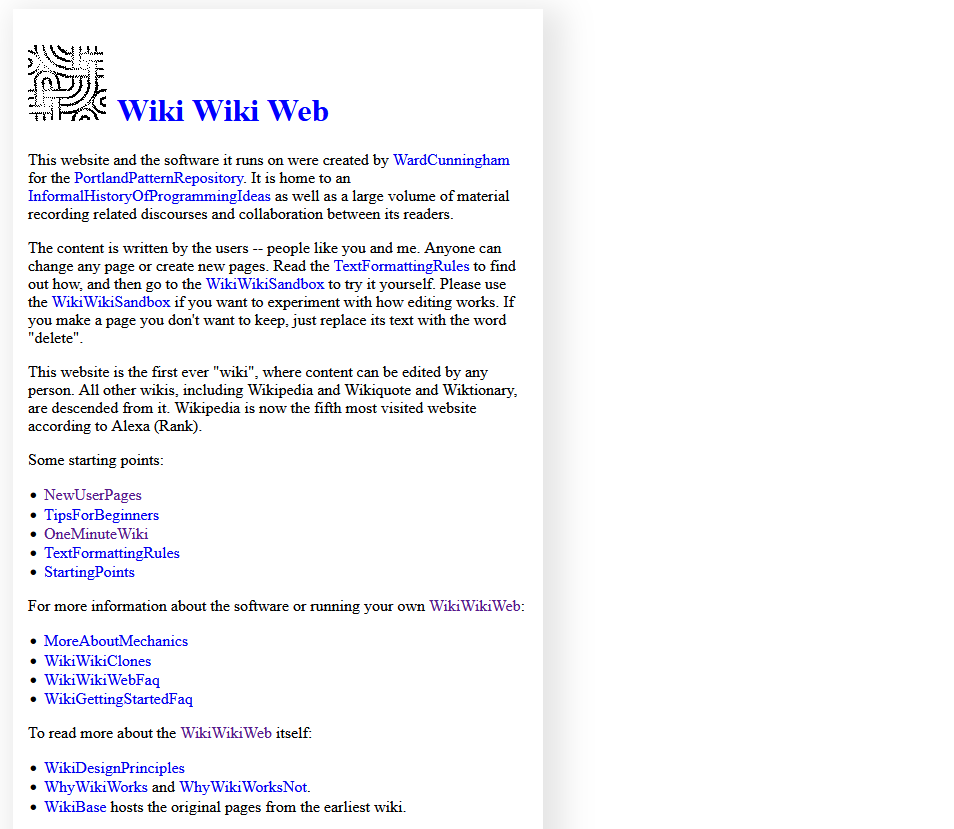
Long before Wikipedia, there was WikiWikiWeb, the very first wiki site. It was created in 1995 by Ward Cunningham, who literally invented the wiki concept.
WikiWikiWeb was (and still is) hosted on Cunningham’s c2.com website as part of the Portland Pattern Repository.
The site allowed any visitor to click “Edit” on a page, make changes, and save—no approval needed.
This was revolutionary at the time!
Suddenly a community of programmers could collectively build a knowledge repository in real-time, rather than emailing files or updating clunky documentation.
While WikiWikiWeb never achieved the mainstream fame of Wikipedia, it’s a legendary example for being the OG wiki.
Key Takeaways from WikiWikiWeb:
- It proved that the wiki concept could work. If you empower users to contribute freely, they will create something greater than the sum of its parts.
- Ease of editing. It allowed users to edit pages directly from their browsers. Which doesn’t sound much but it was a game-changer in 1995.
- Community knowledge sharing
- Lightweight design with focus on content and collaboration.
Anyone building a wiki will find the story of WikiWikiWeb inspiring. It started with a small community and a simple idea, yet it sparked a movement toward collaborative knowledge sharing.
3. wikiHow: Public How-To Wiki
Ever searched how to do something random – like fix a leaky faucet or tie a tie, and found a step-by-step guide with illustrations?

That’s wikiHow for you.
wikiHow public wiki is all about instructional how-to articles. Founded in 2005, wikiHow’s mission is to build “the how-to guide for everything,” written in a wiki style so people can continually improve the instructions.
Each article in wikiHow is written as a series of steps, often accompanied by photos or illustrations created by the community.
They even include Q&A and a list of tips and warnings for completeness.
That’s a commitment to quality and clarity.
Key Takeaways from wikiHow wiki site:
- Articles are written in very simple, friendly language (suitable for about an 8th-grade reader)
- Heavily use illustrations to make guides simple.
- Articles are constantly updated for accuracy and new methods.
- In-house subject-matter experts on certain topics.
- wikiHow runs on a customized version of MediaWiki (the same software that powers Wikipedia)
- Visual editor. So contributors can edit without wading into code.
- Allows both registered and anonymous edits.
- Search engine optimization to get that juicy traffic from Google, Bing and other search engines.
- Mobile-friendly web design
- Easy to get community feedback with a voting system.
wikiHow is a great example of a community-driven wiki. Over the years it’s grown into “the world’s largest how-to website,” attracting millions of visitors each month.
4. Wikivoyage: The Travel Guide Wiki

Wikivoyage is a free, multilingual travel guide written by volunteer authors.
Think of it as a crowdsourced Lonely Planet that you don’t need to purchase—it’s all online and updatable by anyone.
Wikivoyage covers destinations (countries, cities, regions) and travel topics (like budgeting, safety tips, or traveling with pets).
The great thing about it is that it’s not static. If a new museum opens or a train route changes, Wikivoyage contributors will update the page. This ensures that the information stays fairly current.
Key Takeaways from Wikivoyage:
- Being a wiki, all the listings (hotels, restaurants, attractions) in Wikivoyage can be kept up to date by locals or recent travelers.
- A phrasebook section. Handy basic language guides for travelers (with common phrases in the local language).
- It’s ad-free and uses Creative Commons licensing, meaning you can reuse the info with attribution.
- Wikivoyage uses a conversational, travel-friendly tone; Wikipedia maintains a neutral, academic tone.
- Wikivoyage content is action-oriented (where to go, what to see, how to get there)
Wikivoyage aims to help people travel the world smartly, and it very much succeeds with it.
Imagine that you are traveling to Japan for the first time and have no idea where to start. That’s when wiki sites like Wikivoyage come to the rescue!
5. Fandom (Fan Wikis)
Not all wikis are about academia or general knowledge. A huge category of popular wikis are fan encyclopedias for fictional universes, gaming, music, and other pop culture realms.
The biggest host for these is Fandom (formerly Wikia).
Fandom is a platform that provides wiki tools for communities to build their own niche encyclopedias.
One standout example is Memory Alpha, the Star Trek wiki.
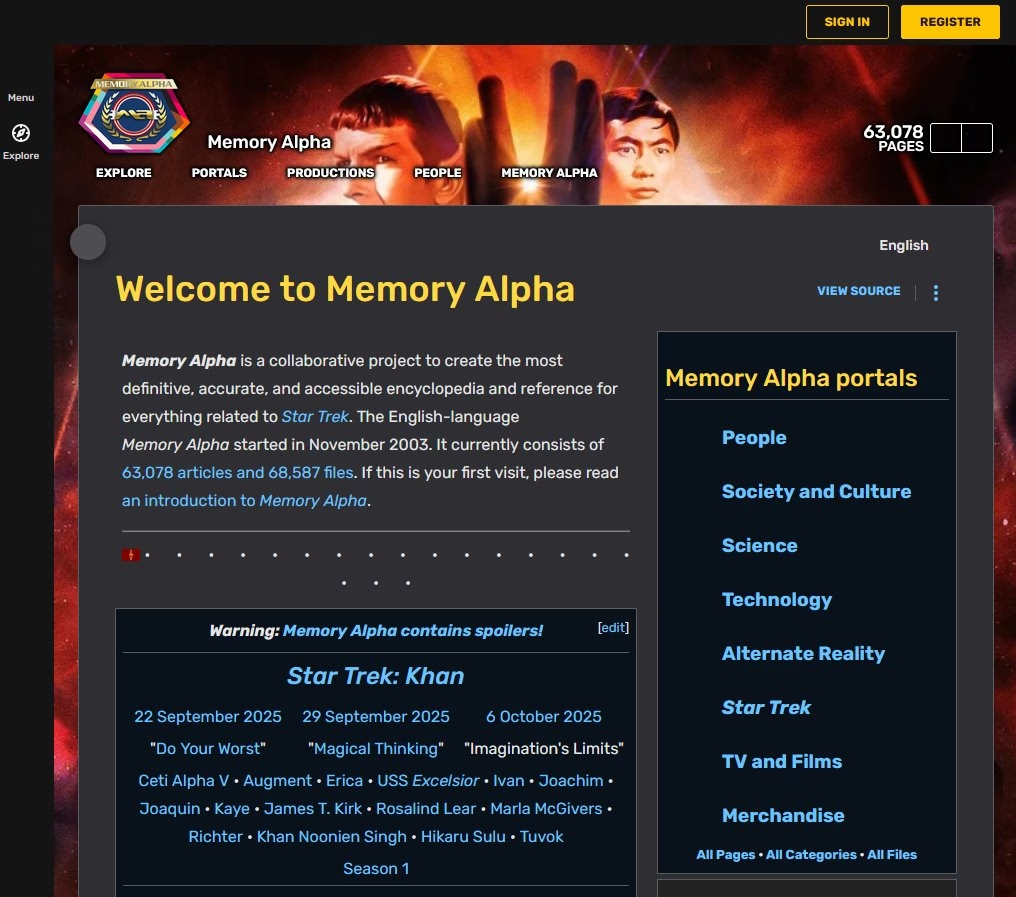
It’s a comprehensive encyclopedia of the Star Trek universe. Every character, planet, episode, and piece of lore is catalogued by devoted Trekkies.
Key Takeaways from Fandom:
- Each wiki hosted on Fandom run by its fan community with its own rules and culture.
- Rich multimedia experience: lots of images, possibly videos, and custom infoboxes that show stats for characters or game items.
- Uniform interface and social features (users can have profiles, follow each other)
- Open for anyone to edit with a free account
If you’re ever deep diving into a fictional world, a Fandom wiki is the place to be.
These wikis demonstrate that when people are truly enthusiastic about a topic, a collaborative wiki can become the ultimate archive of knowledge for it—even if that knowledge is about superheroes or starships.
6. MDN Web Docs: Developer Documentation Wiki
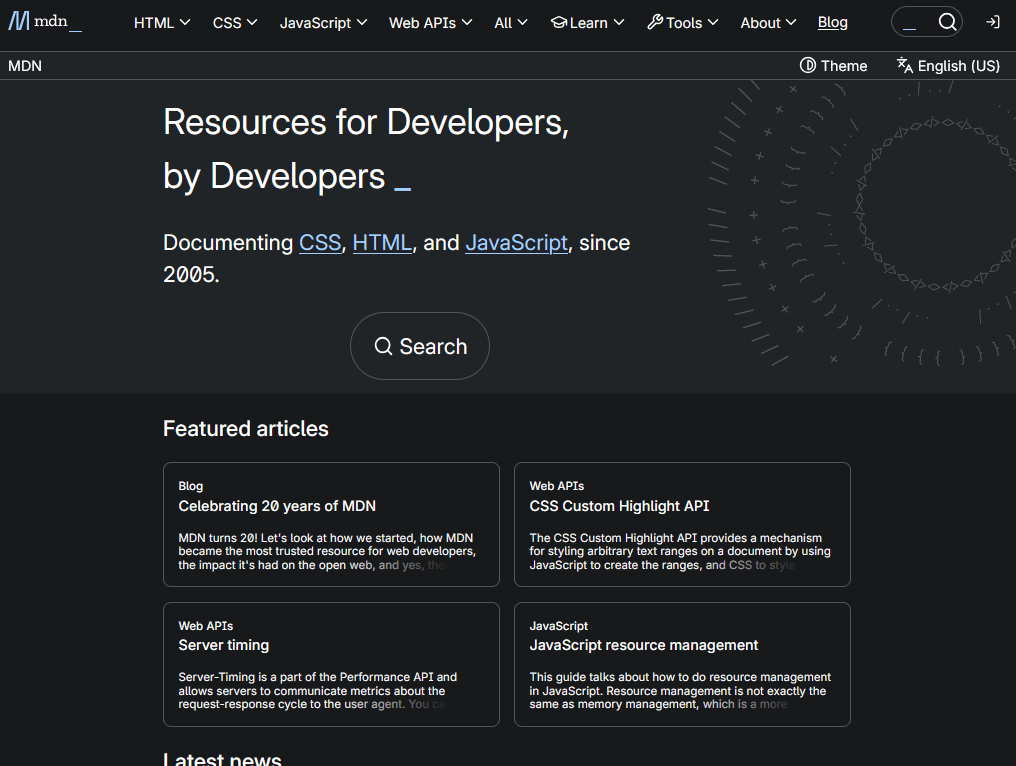
MDN Web Docs (formerly Mozilla Developer Network) is a fantastic wiki-style resource for web developers.
It’s essentially a documentation repository for web standards like HTML, CSS, JavaScript, and APIs, and it was historically maintained as a wiki that anyone could contribute to.
MDN began in 2005 as an open-edit platform. Over time, it became the go-to documentation resource, even for other browser makers. In 2017, Microsoft, Google, and Samsung agreed to merge their web documentation into MDN to create a unified resource.
This was a significant development because, instead of fragmented documentation, developers now had one place with contributions from experts of multiple companies.
Key Takeaways from MDN Wiki Example:
- GitHub pull-request workflow for edits
- The tone of articles is clear and tutorial-like. It doesn’t assume too much prior knowledge.
- Pages often include live example sandboxes where you can tinker with code right in the page.
- Popular articles are available in multiple languages
- Expert-reviewed content
- Structured learning paths: Guides and tutorials are organized by skill level, helping users progress logically.
- Rich visual aids: Code examples, diagrams, and interactive demos make complex topics easier.
- Consistent layout for every article.
MDN shows how a wiki approach can succeed in a highly technical domain. Creating docs that are comprehensive yet easy to digest.
7. Arch Linux Wiki: Community OS Documentation
If you’re into Linux, you’ve probably heard whispers of the legendary Arch Linux Wiki.
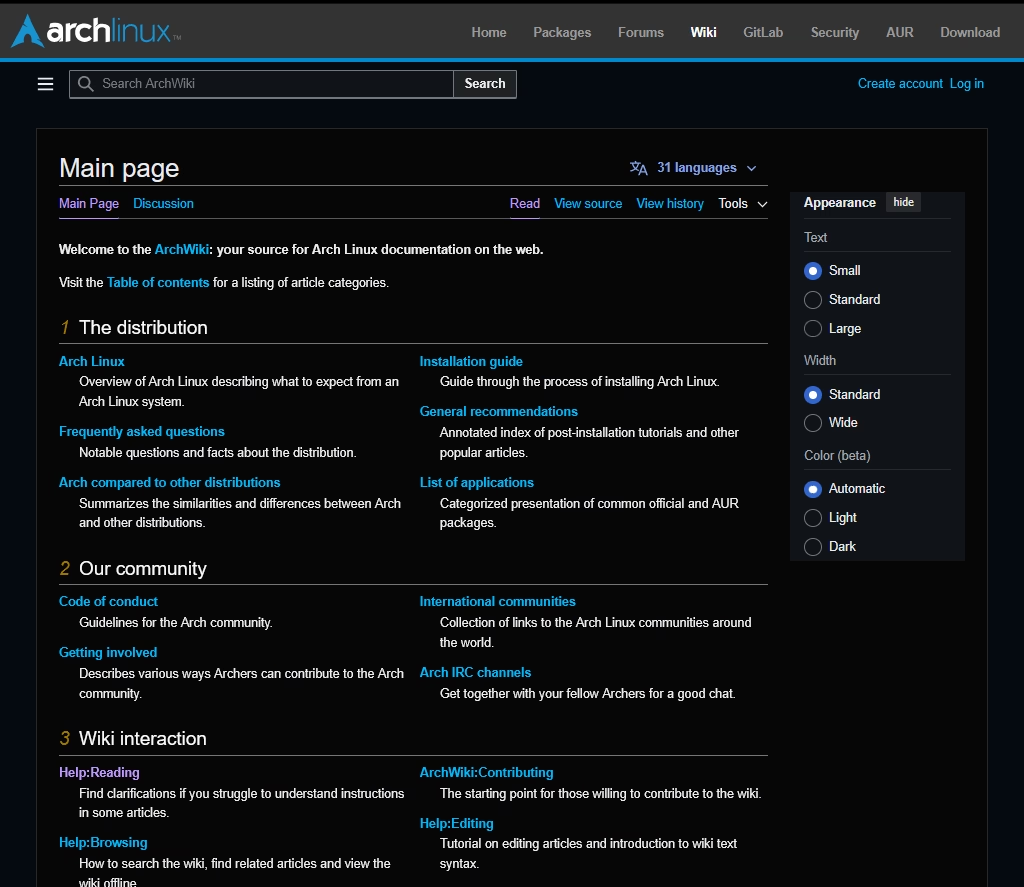
This is a community-maintained knowledge base for Arch Linux (a popular DIY Linux distribution), and it’s often praised as one of the best technical wikis out there.
What makes Arch Linux wiki special is the depth and quality of information.
Key Takeaways from Arch Linux Wiki Example:
- Articles cover deep technical topics with precision, often written by experienced users and developers.
- Community-driven: Most content is contributed and maintained by volunteers.
- Guides are transparent; clearly stating potential risks, edge cases, and user responsibilities.
- Well maintained with new updates
- Minimalist layout and consistent structure: Clean design prioritizes function over aesthetics, making information easy to find.
Arch Linux Wiki is a shining example of a specialized wiki done right. Users know that whatever challenge they face, the wiki likely has answers. This lowers the barrier for newcomers.
8. Radiopaedia: The Radiology Wiki
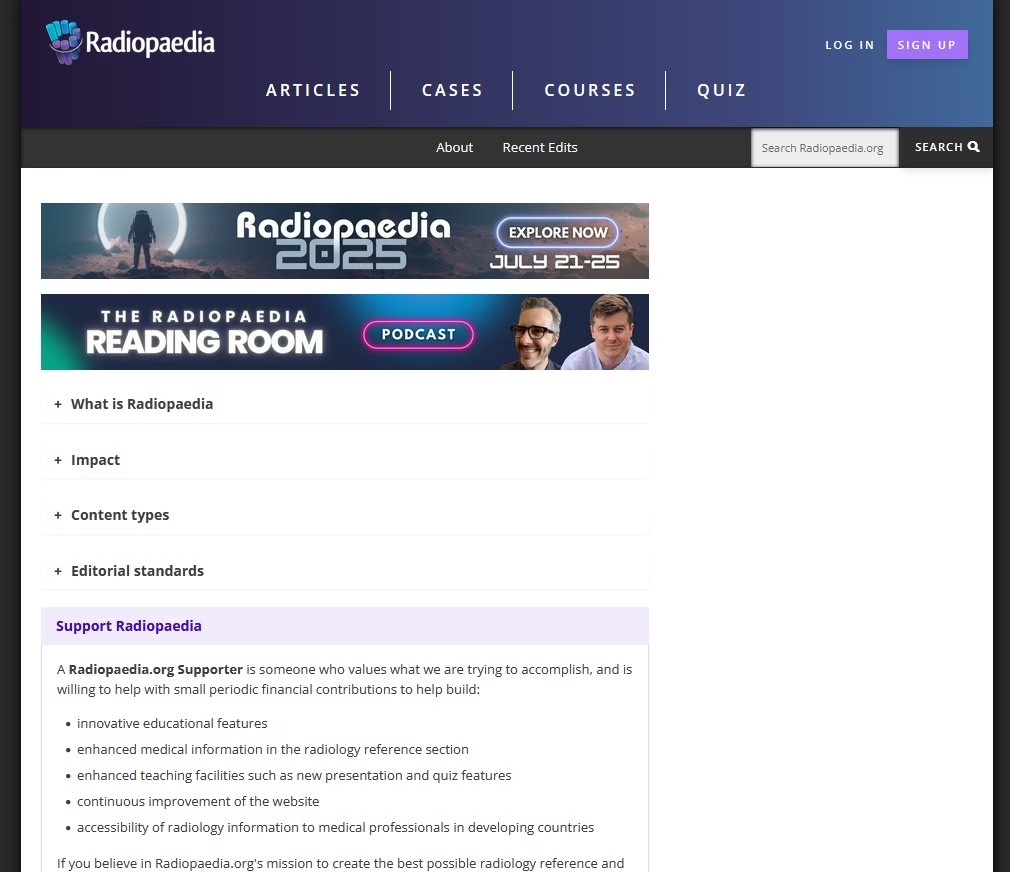
Radiopaedia is another community wiki example. It’s an open-access radiology resource used by radiologists, medical students, and healthcare professionals worldwide.
It contains articles on thousands of radiological conditions, each accompanied by real anonymized case images (like X-rays, CT scans, MRIs) and explanations. Contains over 16,000 articles and more than 56,000 case studies/images.
That’s enormous in the medical field!
Key Takeaways from Radiopaedia Wiki Example:
- The articles on Radiopaedia are typically structured like mini review papers.
- Articles and cases are written and reviewed by medical professionals.
- Articles are backed by real patient cases with images and diagnoses. Radiopaedia prioritizes images over long text.
- A collaborative educational platform.
- Most content on Radiopaedia is freely available under a Creative Commons license.
- A powerful search and well-structured information.
9. GitLab Handbook: Public Company Wiki
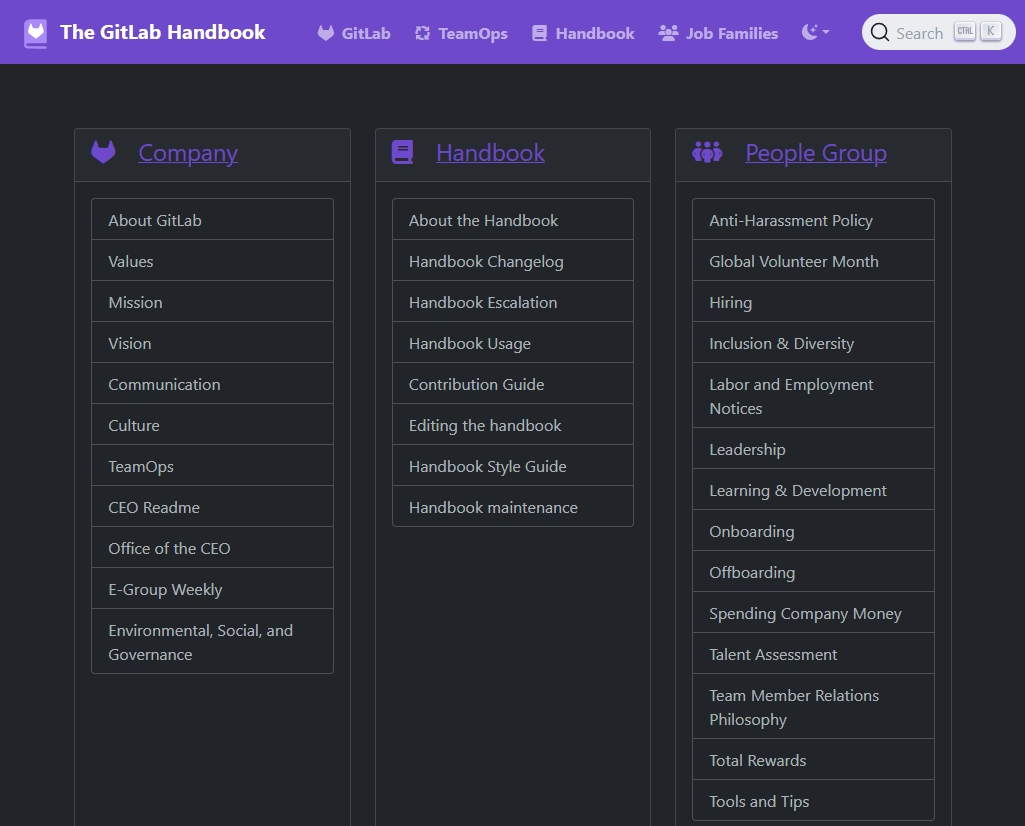
GitLab Handbook is the perfect example of a wiki that you might want to create for your own company.
GitLab Handbook is an extensive internal wiki covering how the company operates, and it’s fully online for anyone to read.
It’s essentially a window into the company’s soul (processes, values, policies, you name it).
Key Takeaways from GitLab Handbook Wiki Example:
- A very comprehensive wiki, with over 2,000 pages. It includes everything from hiring processes to engineering guidelines to marketing playbooks.
- By being public, the GitLab handbook has invited the broader community to give feedback.
- The handbook serves as GitLab’s single source of truth for all company knowledge, policies, and workflows.
- Easy to access: Since it’s public, it can be accessed without logins, or you can even search it on Google (or with other search engines).
- Collaborative editing, version control, and many other wiki management tools.
As a knowledge nerd, I find it encouraging that GitLab treats their internal wiki as a strategic asset and invests in keeping it current.
For readers here, the GitLab Handbook is a stellar example of an internal wiki that’s taken to the next level. Especially, when it’s so hard to find internal wiki examples online.
Your Team’s Wiki: Building a Wiki for Your Company
Now, let’s turn the spotlight to your own team’s wiki.
While we’ve looked at many established wiki site examples, the most relevant wiki might be the one you create for your organization or community.
Every company, from scrappy startups to huge enterprises, can benefit from a wiki or internal knowledge base to capture their unique processes and knowledge.
If you don’t have one yet, it’s easier than ever to build one:
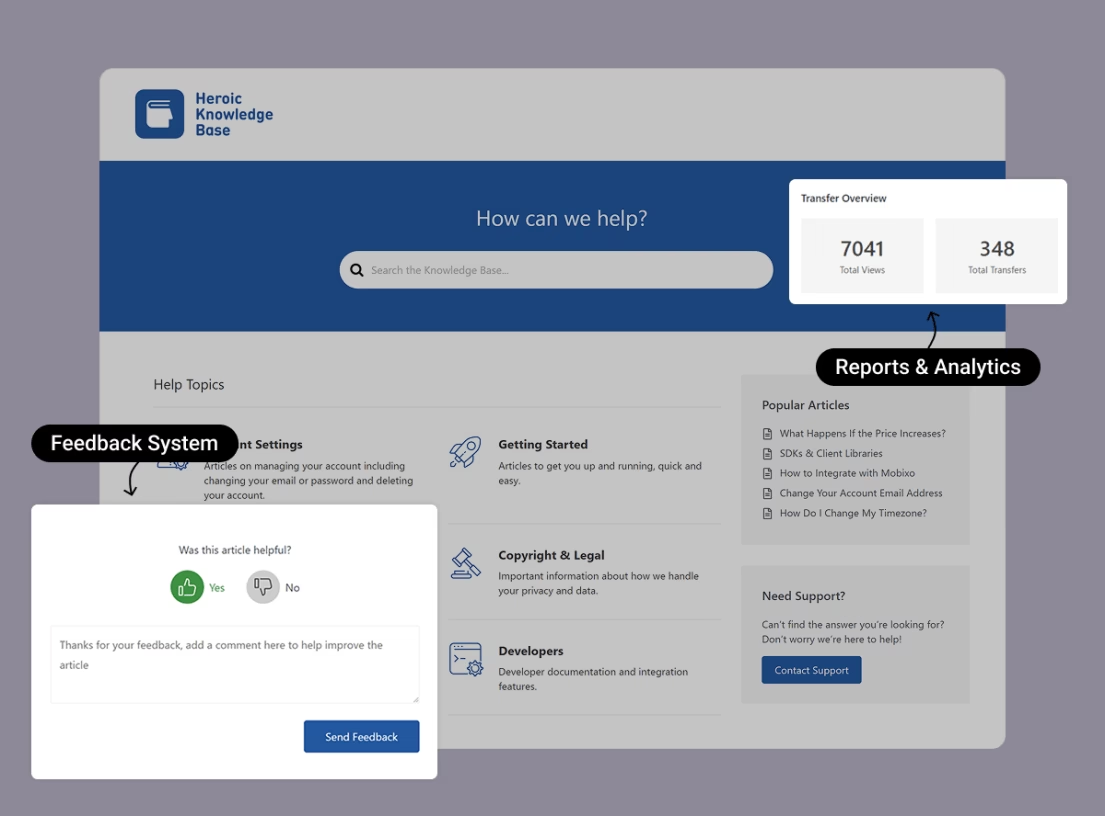
- Use an open-source software like WordPress and a Heroic Knowledge Base plugin to quickly spin up a professional-looking wiki site.
- Host FAQs, documentation, and internal guides on your newly created site with proper tags and categorization.
- Set up access controls and assign roles. Such as editor, reviewer and so on.
- Encourage members to contribute to the wiki by sharing their knowledge in the form of standard operating procedures (SOPs), tool sets, tutorials, and so on.
It will take some time to get proper benefits from your wiki, but if you consistently invest time in it, you will see significant results:
- Centralized knowledge hub
- Continuous improvement
- Improved productivity
- Reduction in internal support tickets
- Faster onboarding
- Consistent communication
- Knowledge retention
- Cultural empowerment
- Better decision-making
When creating your team’s wiki, start small and focused. Perhaps begin with an internal wiki for your company’s policies and how-tos (onboarding guides, IT support solutions, HR policies).
Or if you run a software product, create an external knowledge base wiki for your customers. A place where you document common questions, troubleshooting steps, and tutorials.
Final Thoughts
From global encyclopedias to niche team handbooks, wikis have proven their worth as dynamic knowledge bases.
The wiki examples above demonstrate the concept’s versatility.
If you’re considering a wiki for your own needs, hopefully these examples sparked some ideas.
Software like Heroic Knowledge Base helps deploy wiki in minutes, so you can focus on content.
Do check our other guides on Wiki to learn more!



